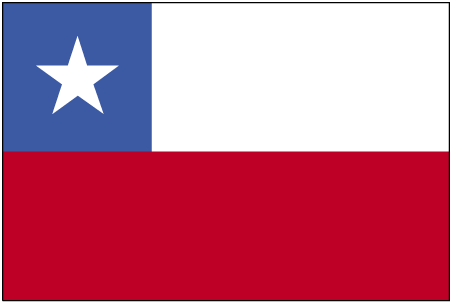SSOT (Sistema Satelital para la Observación de la Tierra)
 SSOT (Satellite for Earth Observation) is an optical high-resolution microsatellite imaging mission of ACE (Agencia Chilena del Espacio - Chilean Space Agency) and the Chilean Air Force (FACh = Fuerza Aerea de Chile), Santiago, Chile. The satellite cost US$70 million, weighs 286 pounds and is expected to be in orbit for five years.
SSOT (Satellite for Earth Observation) is an optical high-resolution microsatellite imaging mission of ACE (Agencia Chilena del Espacio - Chilean Space Agency) and the Chilean Air Force (FACh = Fuerza Aerea de Chile), Santiago, Chile. The satellite cost US$70 million, weighs 286 pounds and is expected to be in orbit for five years.
In August 2008 the government of Chile signed a contract with EADS Astrium SAS for the development of the SSOT system. The SSOT program also included the development and setting up of a ground control segment and image processing facilities enabling the satellites to be directly operated and controlled from Chile by the Chilean authorities. The cooperation agreement makes provision for Chilean engineers to work alongside the Astrium development team. They will be given intensive training in space technology and will participate directly in SSOT project development.
NAOMI (New AstroSat Optical Modular Instrument) is a high-resolution pushbroom imager designed and developed at EADS Astrium SAS. NAOMI is a copy of the imager flown on the AlSat-2 spacecraft of CNTS (Algerian National Space Technology Centre). However, some additional enhancements have been developed for the SSOT program in order to provide a 1.45 m ground sampling distance from the 620 km SSO orbit.
The contract with EADS Astrium represents a partnership solution for Chile in the field of Earth observation. The SSOT program follows in the wake of the FormoSat-2 satellite of Taiwan, which was launched on May 20, 2004, the South Korean KOMPSAT-2 and COMS satellites, the THEOS program developed for Thailand, which was launched on October 1, 2008, and the two AlSat-2 satellites, were built for the government of Algeria.
The SSOT mission enabled Chile to obtain high quality imagery for use in a wide variety of applications both in the defense and civil domains: cartography; agricultural management; forestry; water, mineral and oil resources; crop protection; natural disaster response; urban planning, etc. In Chile, SSOT is also known as FASat Charlie as in the FASat Bravo (Fuerza Aerea Satellite - Bravo), a microsatellite mission of FACh, which was launched on July 10, 1998.
SSOT represents the third Earth observation satellite system from the AstroSat-100 family which is based on the Myriade platform of CNES. CNES signed partnership agreements with AAS (Alcatel Alenia Space) and EADS/Astrium SAS which permits them to use the Myriade bus design and products for their own applications/missions (defense, commercial market, etc.). EADS/Astrium refers to its customized Myriade platform version as AstroSat-100, capable of accommodating a payload of up to 50 kg and providing up to 50 W DC power.
The SSOT spacecraft bus is of AlSat-2 heritage. The spacecraft structure is an aluminum box of size: 60 cm x 60 cm x 100 cm. Figure 2 shows the platform mechanical accommodation; all 4 panels of the structure fold out during integration, allowing easy access to all equipment during platform integration. This accommodation allows a good level of flexibility with respect to the payload size.
SSOT was launched on December 17, 2011 as a secondary payload on a Soyuz-STA/Fregat launcher from Kourou (launch provider: Arianespace, flight VS02 = Vehicle Soyuz 02 mission). The primary payload on this mission is Pleiades-HR1 of CNES, France. Airbus Defence and Space built the Chilean satellite system, FaSat Charlie (SSOT) which was functioning perfectly almost 2.5 years after launch, and constitutes the most powerful Earth observation system ever flown in Latin America.
|
NEWSLETTER
|
| Join the GlobalSecurity.org mailing list |
|
|
|

